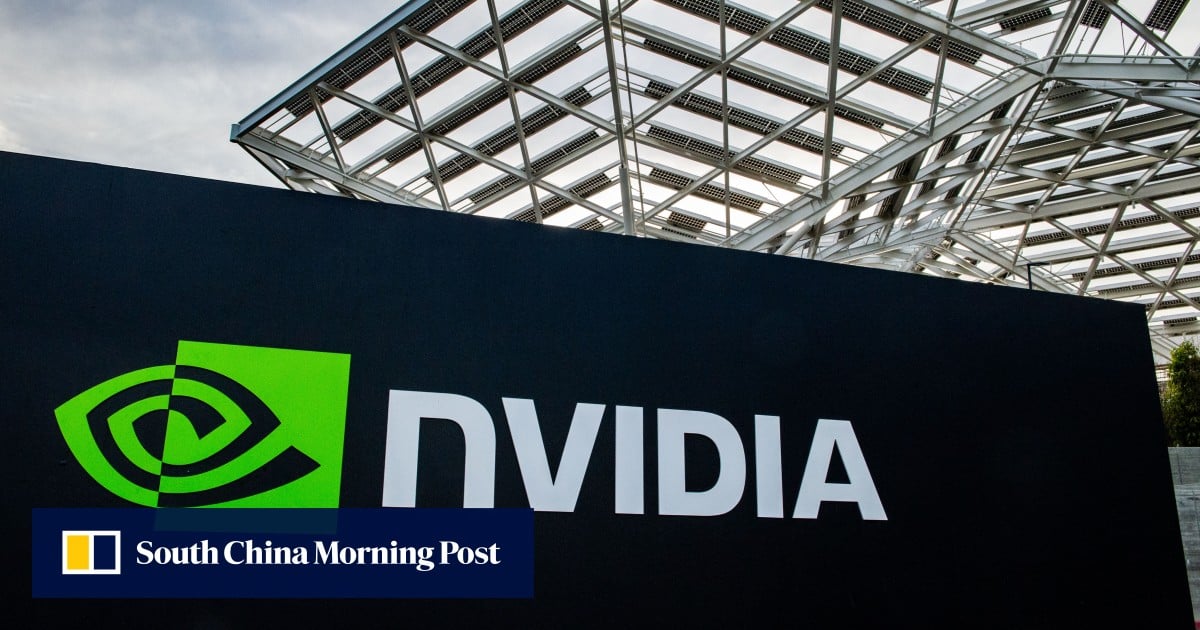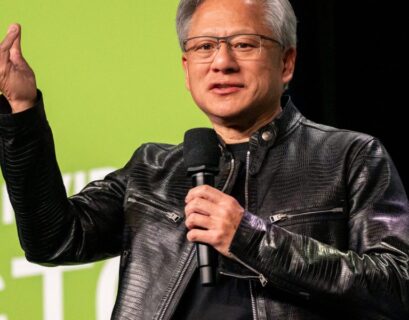Now, Tesla stocks have plummeted by over 50% from their highest point in 2021, dragging down other electric vehicle (EV) stocks that surged alongside it. This downturn should serve as a cautionary tale for Nvidia investors who view the company as an unlimited wager on the future of artificial intelligence (AI). Despite a 66% increase in the company’s shares this year following a more than threefold surge in 2023, recent events warrant reflection.
“We have witnessed repeatedly that when investors become enamored with the latest technological innovation, rationality often takes a back seat,” remarked Adam Sarhan, the founder and CEO of 50 Park Investments, in a recent interview. “And when emotions dominate, the sky appears to be the only limit.”

A snapshot of Tesla’s Model Y electric vehicles captured at the Gigafactory in Gruenheide, Germany. (Source: Reuters)
While there exist notable distinctions between Nvidia and Tesla, ranging from their product offerings to the leadership styles of their executives, the similarities between the two are striking.
Nvidia’s ascent, transitioning from a specialized chip provider to one of the globe’s largest corporations, hinges on the belief that its remarkable sales growth over the past year is sustainable.
Conversely, Tesla’s meteoric rise in 2020, propelling its valuation well beyond US$1.2 trillion, was predicated on the assumption of widespread and rapid adoption of electric vehicles (EVs), with Tesla positioned as the frontrunner in that market.
However, reality has interjected itself into this narrative.
The EV market’s demand is tapering off as the initial wave of enthusiastic early adopters has made their purchases, while more price-sensitive and change-resistant consumers are taking longer than anticipated to embrace this new technology.
Consequently, Tesla has descended by 31% from its recent peak in July and stands as one of the most substantial decliners in the Nasdaq 100 Index this year.

Elon Musk, the CEO of Tesla. (Source: AP)
“There is immense potential surrounding autonomous vehicles, the Cybertruck, and yet the company’s stock is suffering. Why? They are relinquishing market share and experiencing diminishing margins. In the tech realm, this scenario spells trouble,” noted Sameer Bhasin, a principal at Value Point Capital.
For Nvidia, any indications of a slowdown in the hype cycle are not yet apparent.
The company, headquartered in Santa Clara, California, has delivered exceptional results for four consecutive quarters, fueled by seemingly insatiable demand for its chips utilized in training extensive language models that power AI applications like OpenAI’s ChatGPT.
Following a remarkable performance last year, Nvidia’s stock has once again emerged as the top performer in the S&P 500 Index in 2024, boasting a 66% surge. With a market capitalization exceeding US$2 trillion, it trails only Apple and Microsoft in valuation.
The discourse on the widespread integration of AI across various industries evokes memories of the fervor surrounding the internet during the years leading up to the dot-com bubble. Unlike that era, where internet companies were valued based on novel metrics like “clicks” while hemorrhaging money, Nvidia is generating substantial profits.
Net income soared by over 500% to nearly US$30 billion last year and is projected to double in the current fiscal year, as per data compiled by Bloomberg.

Jensen Huang, the CEO of Nvidia. (Source: Reuters)
These substantial profits and sales, coupled with the company’s consistent outperformance against estimates, have helped maintain reasonable valuation metrics. Nevertheless, Nvidia boasts the highest price-to-sales ratio in the S&P 500 at 18.
Presently, the semiconductor design firm holds a significant advantage in the realm of graphics processing units optimized for processing vast amounts of data crucial for AI models. Yet, competitors are eager to seize a portion of this market.
Advanced Micro Devices recently unveiled a series of accelerators, and even Nvidia’s clients like Microsoft are swiftly developing their own chips.
“If one truly believes in this AI frenzy, envisioning a landscape a decade from now where AI is deeply embedded in various sectors, necessitating these colossal systems powered by chips exclusively provided by Nvidia is conceivable,” highlighted Sameer Bhasin, principal at Value Point Capital. “Even amidst a perceived pause in purchasing, the stock may face repercussions.”
Nvidia’s exceptional performance underscores its resilience amid the China decoupling
This narrative does not seek to undermine the transformative potential of electric vehicles or AI. However, it prompts reflection on whether investors are valuing future growth that may never materialize.
Consider Cisco Systems, a market favorite during the dot-com era. While still a prosperous entity, investors who entered the stock around its peak and retained their positions are still awaiting a recovery – 24 years later.
“The bubble persists because the underlying concept is genuine,” noted Cole Wilcox, CEO and portfolio manager at Longboard Asset Management. “Yet, just because the overarching macro trend is authentic, it does not guarantee that all these ventures will prove to be prudent investments. Distinguishing the victors from the vanquished will be imperative.”










